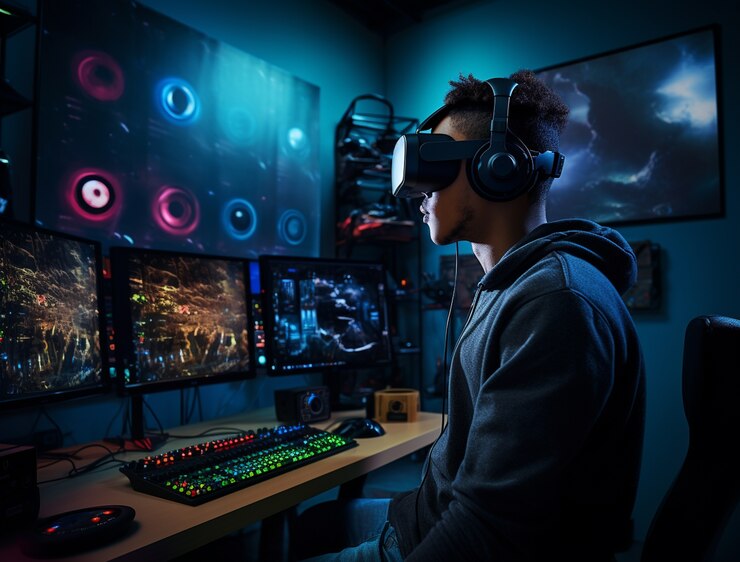Video editing is a captivating art that integrates storytelling into each frame, where every element shapes the narrative. This post explores advanced techniques like color grading, sound design, motion graphics, and transitions, emphasizing the importance of storytelling. It also offers tips for using industry-standard software like Adobe Premiere Pro and DaVinci Resolve to elevate editing skills.
The Art of Color Grading
Color grading is a powerful tool that can significantly alter the mood and tone of your video by adjusting colors to evoke specific emotions. Programs like DaVinci Resolve offer precise controls for fine-tuning hues, saturation, and contrast. While experimenting with color palettes can enhance your story, it’s important to maintain subtlety to avoid distracting viewers. Understanding how warm and cool tones impact emotions and considering lighting conditions for a cohesive look throughout your project are key.
Sound Design: Crafting an Auditory Experience
Sound design is a vital yet often overlooked aspect of video editing that significantly enhances storytelling. By integrating ambient sounds, sound effects, and clear dialogue, editors can transform scenes and immerse audiences. Adobe Premiere Pro and Adobe Audition allow for seamless audio refinement, ensuring that sound elements are layered effectively to add depth and emotional impact. Attention to pacing and synchronization with visuals is essential for creating a captivating viewing experience.
Motion Graphics: Adding Dynamic Visuals
Incorporating motion graphics into your projects can create captivating experiences by using animated text, kinetic typography, and dynamic lower thirds. Adobe After Effects is the preferred tool for professionals to craft eye-catching graphics. When blending these elements, focus on seamless integration that enhances the content without overpowering it. Motion graphics can highlight key points and improve clarity, keeping your audience engaged.
Advanced Transitions: Smooth Storytelling
Transitions are a creative tool to enhance storytelling in video editing. They go beyond simple cuts or fades, offering techniques like whip pans, match cuts, and L-cuts to maintain rhythm and connect scenes. With Adobe Premiere Pro, you can customize transition effects to match your video’s tone while ensuring they enhance the narrative. Experimenting with different techniques can help you find the right balance to captivate your audience.
Storytelling Through Editing
Video editing is an exciting storytelling journey where each cut and effect contributes to the narrative. By focusing on the story arc, editors can use pacing and shot selection techniques to shape viewers’ emotions and experiences. Prioritizing the narrative ensures that technical choices enhance rather than detract from the story.
Balancing Creativity and Technical Skills
A polished final product reflects the blend of creativity and technical skill. While tools like Adobe Premiere Pro and DaVinci Resolve are powerful, your unique vision is key. Continuously refine your artistic instincts, explore new plugins, and engage with online communities for feedback. Stay curious and dedicated to push the boundaries of your video editing skills and let your creativity shine!
Leveraging AI in Video Editing
Artificial intelligence is revolutionizing video editing by automating tedious tasks such as color correction, audio balancing, and scene detection. Tools like Adobe Sensei allow editors to focus on creativity by handling technical aspects, suggesting optimal color grading, and enhancing audio quality. Embrace AI to elevate your editing process and achieve professional results!
The Importance of Feedback and Collaboration
Collaborating and seeking feedback from others is essential for growth as a video editor. Sharing work with peers provides new perspectives and insights that enhance skills and improve final products. Engaging in online communities and collaborative projects helps broaden styles and skill sets, fostering collective growth in the editing journey.
Staying Updated with Industry Trends
The video editing landscape is constantly evolving, making it essential to stay updated on industry trends to remain competitive. Engaging with industry blogs, webinars, and online courses can help you keep up. Exciting trends like 360-degree video, virtual reality (VR), and augmented reality (AR) are gaining popularity, offering opportunities to enhance creativity and provide innovative solutions to clients.
Investing in Quality Equipment
Quality equipment plays a crucial role in video production, significantly affecting the final product. Investing in high-quality cameras, microphones, and lighting enhances production value. Regular maintenance and upgrades, such as higher-resolution cameras and professional microphones, improve footage clarity and audio richness, elevating the professionalism and impact of your work.
Building a Strong Portfolio
A strong portfolio is essential for showcasing your skills as an editor and attracting new clients. Curate your best work to highlight your versatility and proficiency in advanced techniques like color grading and storytelling. Consider creating an online portfolio with project descriptions that detail your role and the challenges faced, as this professionalism enhances your credibility in the industry.
Conclusion
Mastering advanced video editing requires dedication, creativity, and storytelling skills. By focusing on color grading, sound design, motion graphics, and transitions, you can create professional-quality videos. Embrace the challenge, invest in quality equipment, and seek feedback to improve. For those looking to enhance their skills, consider signing up for Jasper for free to elevate your video projects and significantly impact digital marketing.

